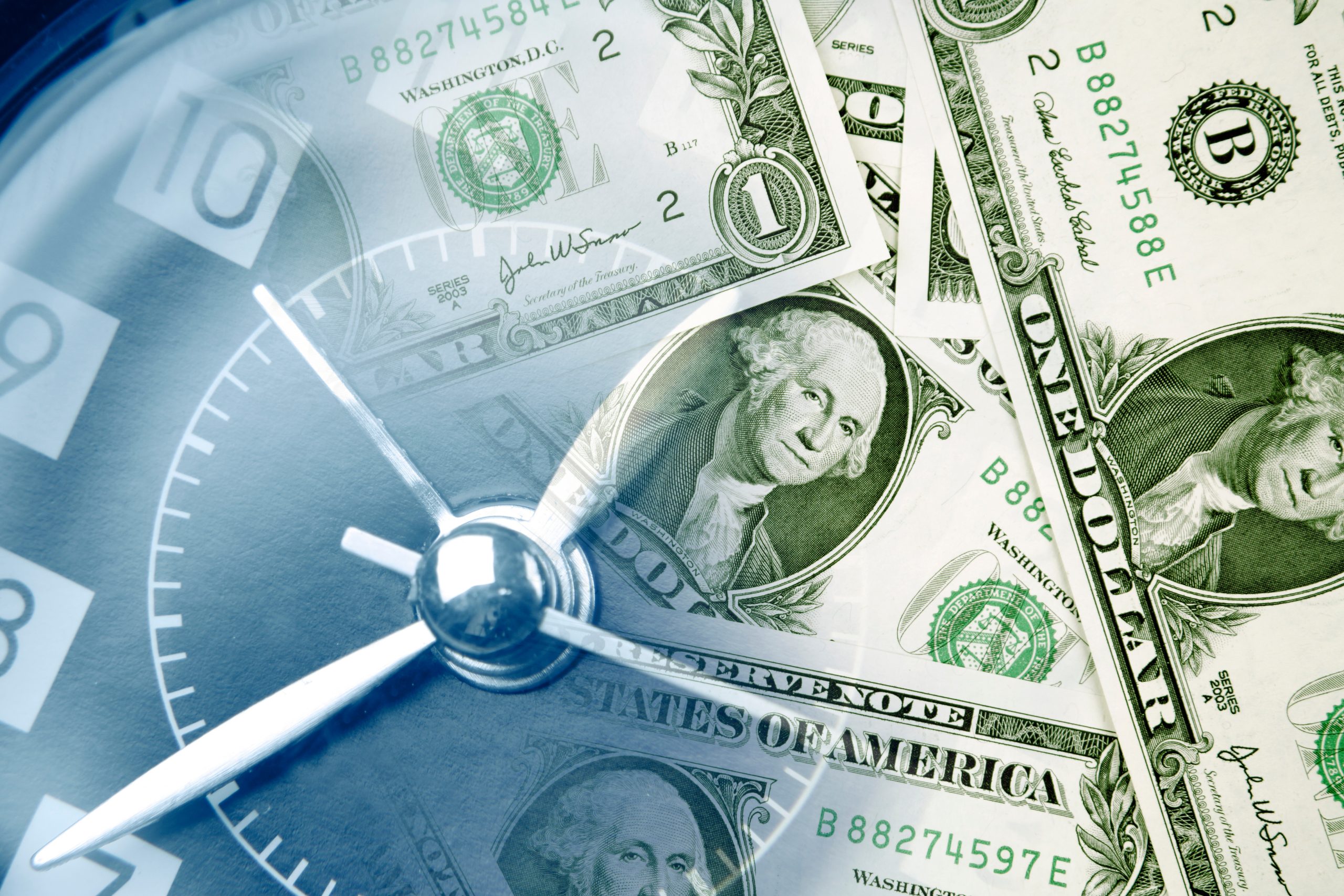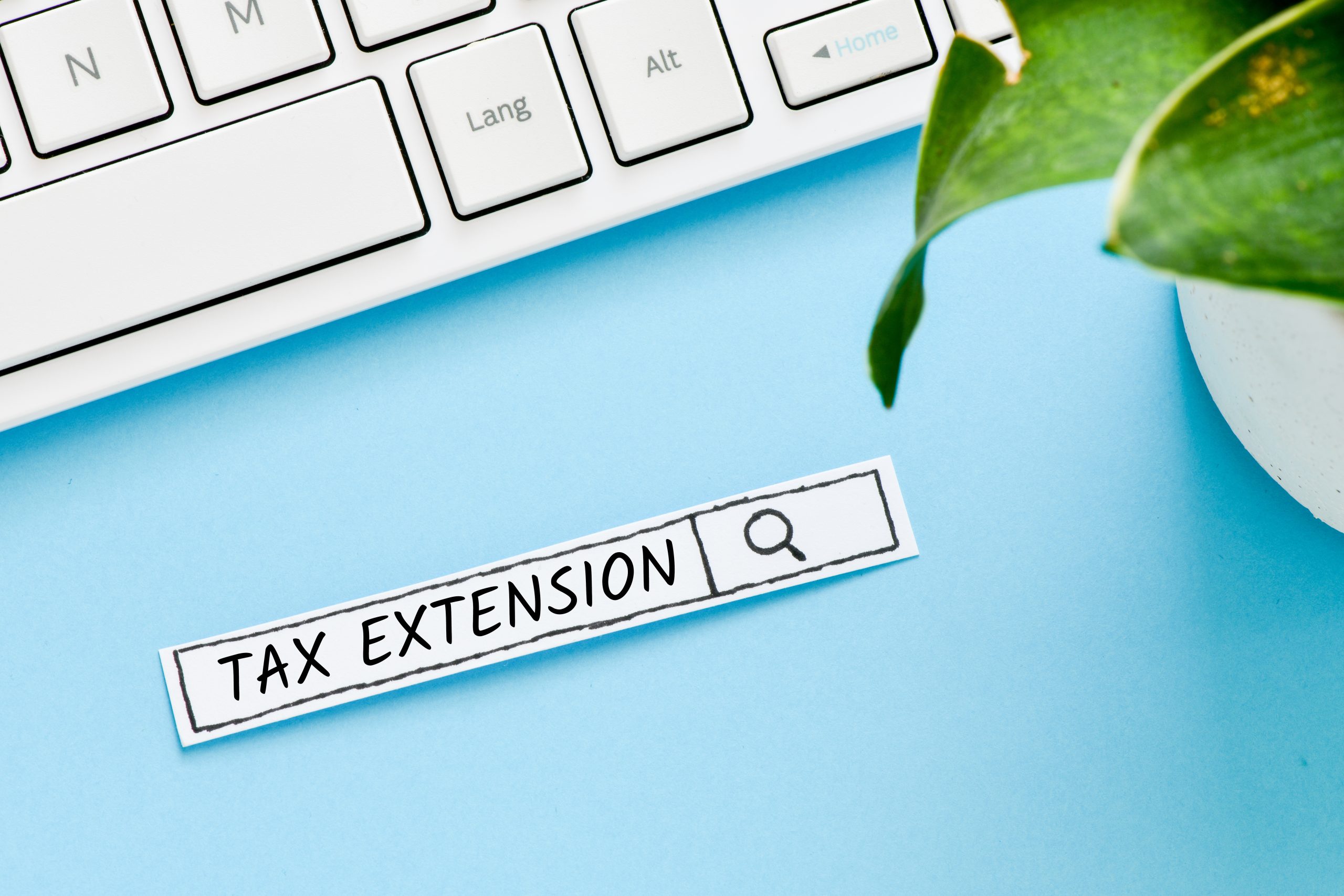The U.S. economy faces multiple challenges. The recovery has been more rapid than expected but now there’s an acute inflation problem. Jason Furman, economist and professor at Harvard University’s John F. Kennedy School, wrote an opinion piece in the WSJ, that stated “the current inflation has many causes, including a post-pandemic reallocation of labor, a spending shift from services to goods, lingering supply-chain disruptions, and rising global oil and gas prices. These international factors don’t tell the whole story. Inflation in the U.S. was similar to what the euro area experienced going into the pandemic, but prices have risen a cumulative 4% more in the U.S. over the past two years.”
According to recent reporting from Marketwatch, which stated that the highest annual U.S. inflation rate in almost 31 years, (with the index increasing 0.9% in October) reverberated across financial markets and in the minds of Americans this week, damaging consumer sentiment, leaving many traders flummoxed, and causing one financial firm to warn that the proverbial “genie is out of the bottle.” Housing costs are one of the main drivers of the rising cost of living in America. The shelter sub-index increased by 0.5% last month, accounting for roughly one-fifth of the broader index’s rise. That is in part a reflection of how the index is weighted since housing-related costs typically consume much of a household’s budget.
Americans haven’t had to worry about inflation for decades. As prices rise at a pace not seen since the 1990s, many haven’t experienced the havoc that inflation can cause on their wallets. Some are so far failing to reconcile the reality of price increases with the lifestyle changes required to adapt. Another WSJ article recently reported that some people who didn’t lose work because of the pandemic were able to stash significant savings and aren’t making any spending or budgeting changes, stated Wendy Edelberg, director of the Hamilton Project, an economic-policy initiative within the Brookings Institution.
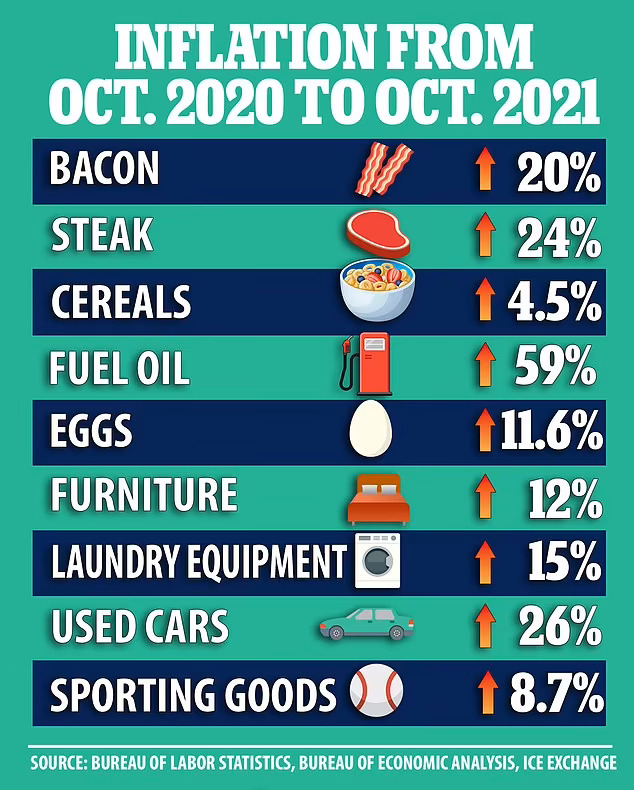
Signs of growing inflation worries were seemingly everywhere on Friday, November 13, starting with the University of Michigan consumer sentiment index, which fell to the lowest level in a decade. In financial markets, interest rate traders pushed for a faster response from the Federal Reserve and investors flocked to gold, a traditional haven from higher prices. Meanwhile, the average American was lamenting the rising cost of everything from concert tickets to a regular burrito.
Marketwatch further reported that for the past few months, inflation fears have lingered and occasionally been overshadowed by worries of an economic slowdown. The concern now is the risk of a “vicious feedback loop” between actual inflation and expectations, which may prove difficult to arrest once unleashed, says Derek Tang, an economist at Monetary Policy Analytics in Washington. He likens the dynamic to “a switch that’s hard to turn back off,” in which the prospect of ever-rising prices remains constant in people’s minds and “there’s little or not much the Fed can do.”
Inflation over the past year marched to 6.2% in October
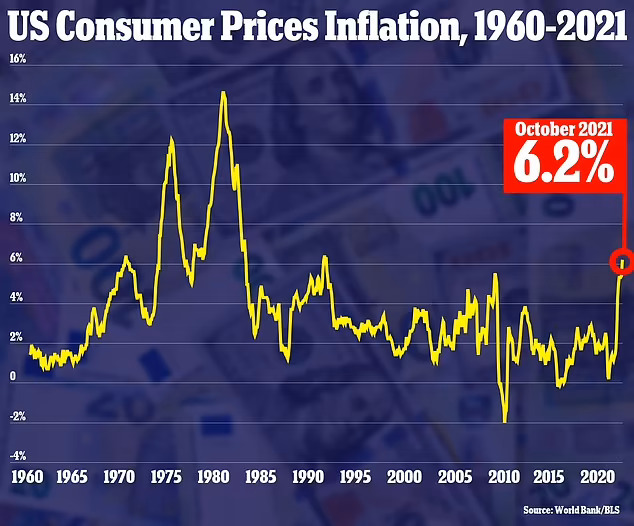
October’s CPI report showed the headline annual inflation rate accelerating to 6.2%, the highest since November 1990, (up from 5.4 percent in September, according to Labor Department’s Consumer Price Index.) on the back of rising costs for everything from gas to rent and medical care. It was the sixth straight month of year-over-year readings at or above 5%, more than double the Fed’s 2% target.
Escalating inflation, along with a growing belief among consumers that effective policies are not being developed to combat it, was identified as a big factor behind the drop in the University of Michigan’s sentiment report. The average American hasn’t had to worry about high inflation for decades, and many traders weren’t alive during the 1970s era of stagflation. As a result, a large number of people have been caught off guard by the strength of recent price rises.
Investors like Jay Hatfield of Infrastructure Capital Advisors, along with Stifel Chief Economist Lindsey Piegza, say the Fed has “lost control” of inflation. Big-name firms like bond giant PIMCO are warning that the headline CPI rate is likely reaching 7% over the next several months. And average Americans are paying as much as $100 to $200 for a single concert ticket, $90 for a bottle of wine, and $5 a gallon for gas while the Federal Reserve is sticking to its view in its Nov. 3 policy statement that inflation pressures are expected to prove transitory.
California gas prices soar to all-time high amid inflation boom
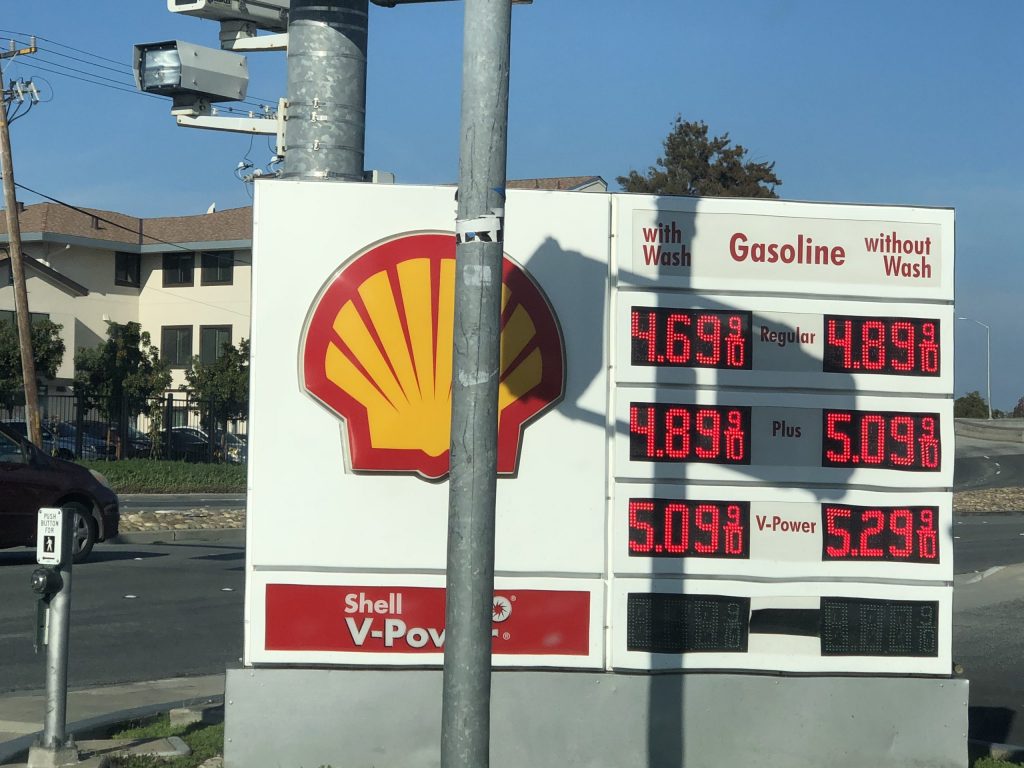
On Monday, November 15, The New York Post, reported that California gas prices notched a new all-time high Monday as prices nationwide continue to flare up amid rapidly spiking inflation throughout the economy.
Monday’s average price for a gallon of regular unleaded gas in California rose to $4.682, according to the American Automobile Association, slightly higher than Sunday’s figure, which broke the former record of $4.671 previously set in October 2012. The most expensive gas in California is here in Mono County, a 13,000-person tourist destination on the border with Nevada that is home to the Mammoth Mountain ski resort. The average price for a gallon of regular unleaded is $5.66, according to AAA.
Heavy rainstorms in Northern California have hampered production capacity, CNN reported, which has limited the supply and driven up prices across the state and region.
The Automobile Club of Southern California said it expects 3.8 million drivers to hit the roads for the Thanksgiving holiday, and is “urging travelers to minimize their fuel expense by making sure their tires are properly inflated.”
Doug Shupe, a spokesperson for AAA, told CNN “Drivers are paying $1.50 more per gallon than a year ago,” and he also attributes the price spike to be correlated with higher crude oil prices in addition to pent-up demand for travel as Americans look to make up for trips lost due to the pandemic.
Will Biden’s Build Back Better bill help or hurt housing inflation?
According to another Marketwatch article, one of the biggest drivers why prices are going up for both home buyers and renters is that the country faces a housing supply shortage. A report from the National Association of Realtors found that 12.3 million new households were formed across the country between 2012 and June 2021. During that time though, construction was completed on only 7 million single-family homes.
The gap between home construction and household formation has actually worsened between 2019 and 2021. If household formations were to continue at the average rate from the past five years, home builders would need to complete triple as many homes as their average rate to close that gap in the next five to six years.
At the end of the day, people have to live somewhere, so the gap means that demand for housing far exceeds the supply, driving prices higher. The question then becomes whether the policies proposed in the Build Back Better plan will address enough of the supply-side issues to counteract this high demand.
The dirty little secret here … while nobody likes to pay more, on average, we have the money to do so
Inflation airhead: NBC’s Stephanie Ruhle says the “dirty little secret” of people complaining about paying higher prices for food and fuel for their homes is they can afford it just fine. According to her, people should have been saving during the pandemic and stocks look good. pic.twitter.com/RQ90focIXJ
— Nicholas Fondacaro (@NickFondacaro) November 14, 2021
NBC business correspondent Stephanie Ruhle is under fire for comments she made about how Americans are coping with rising inflation. On a segment with “Sunday Today” anchor Willie Geist she said “the dirty little secret here … while nobody likes to pay more, on average, we have the money to do so,.” She went on to also say “household savings hit a record high over the pandemic. … For those who own their homes, the value of our homes are up. And while the stock market isn’t the economy, you’ve got over half of American households with some investment in the markets, and the markets have hit record highs.”
But her comments drew backlash from critics arguing that Ruhle, who spent a decade and a half on Wall Street before veering into broadcast journalism, is out of touch with the realities many Americans are facing.
As Ruhle noted, by some measures, Americans are better off than they have previously been. The expanded child tax credit is sending some families with children hundreds of dollars a month, she points out. Also, the personal savings rate, which measures the ratio of personal savings to disposable personal income, soared to 21% in the first quarter of 2021. And there’s been considerable wage growth, with hourly wages increasing by 4.6% over the past year, compared with a 2.5% to 3% pace before the pandemic.
But with inflation at its highest level in over a decade, it may still be a challenging environment for Americans, economists warn. Harvard University professor Jason Furman wrote “Large and unexpected surprise inflation, however, can reduce real wages,” in a post published by Peterson Insitute for International Economics.
Worker bargaining power has been no match for high inflation
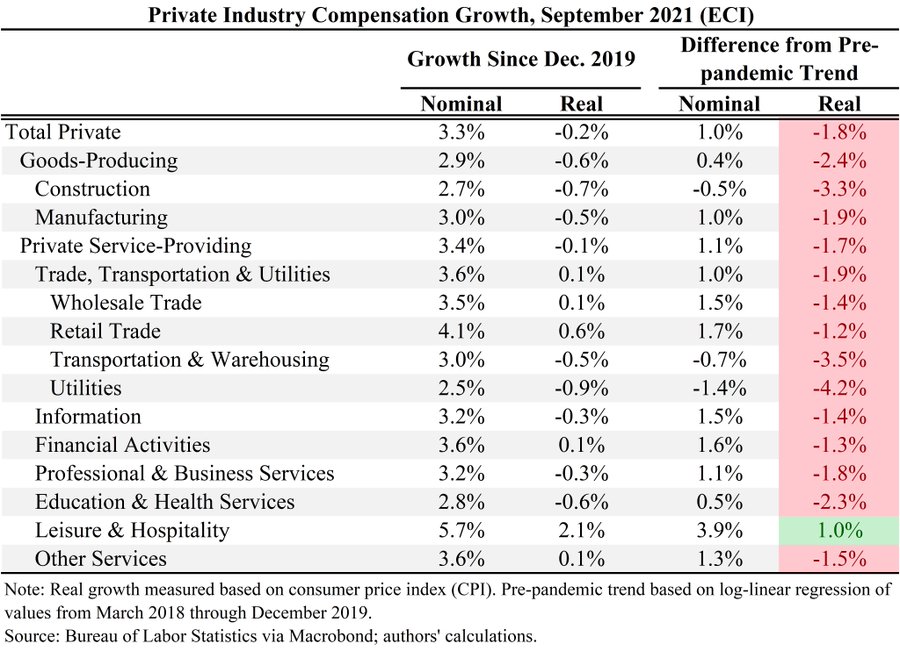
Last quarter, Americans saw their wages and salaries increase by 1.5%, capping a 5.4% increase over the past 12 months, not adjusting for inflation, according to data the Department of Labor recently published.
But when you take into account inflation — which is at the highest level in over a decade — wages and salaries effectively only grew by 0.6% last quarter and have actually shrunk, in terms of buying power, by 1.1% over the past 12 months.
Inflation grew by 1.2% over the third quarter and more than 5% over the past 12 months, measured by the consumer price index.
Andrew Hunter, a senior U.S. economist at Capital Economics, told Marketwatch, “so while higher wages might seem good for workers, it isn’t so great if those gains are offset by a decline in real purchasing power caused by higher prices.” Mr Hunter also pointed out that there are signs that “surging wage growth is itself feeding directly through to higher prices in some sectors — most notably leisure and hospitality.” Meaning that the raises workers are getting are enabling business owners to raise their prices.
Mr Furman also explained that “steady and predictable inflation does not generally impact real wages, and, in fact, if this inflation results from higher employment levels, it may even raise real wages.” And that large and unexpected surprise inflation, however, can reduce real wages —especially if employers do not build cost-of-living adjustments into their wage increase.
This flip side to this argument is that employers may also be raising wages to recruit and retain talent in the face of widespread labor shortages.
There are some 10.4 million job openings in the U.S., while some 7.7 million Americans are unemployed.
Why Do Prices Keep Going Up and What’s the Cause of Inflation?
It is one of the most vexing problems facing economists and government policy-makers, from Federal Reserve officials, who set interest rates, to the Biden administration and Congress. The causes are myriad, and the tools that are usually deployed can, in some scenarios, push the economy into a recession as a way of taming price pressures. The current bout of inflation has several identified causes, many of them linked to the pandemic. For one, consumers are flush with savings from government stimulus programs and depressed services spending from restrictions on businesses, leading them to open the spigot for goods that are in scarce supply.
The WSJ reported in another report that there also are fewer workers in the labor market, encouraging those who are working to demand raises and crimping overall productivity. These factors and many others are driving up costs. Energy prices, including gasoline, have gone up as oil-and-gas production lags behind a return of consumer demand coming out of the pandemic. This return of demand has also led to supply-chain disruptions. Truck drivers, seaport slots, and warehouse spaces are all in short supply, leading to costly delays and rising shipping rates for goods.
These added costs, at every step from production to sale, lead to price increases for consumers, with some companies seizing on a rare opportunity to raise prices.
What Does Inflation Mean for American Businesses? For Some, Bigger Profits
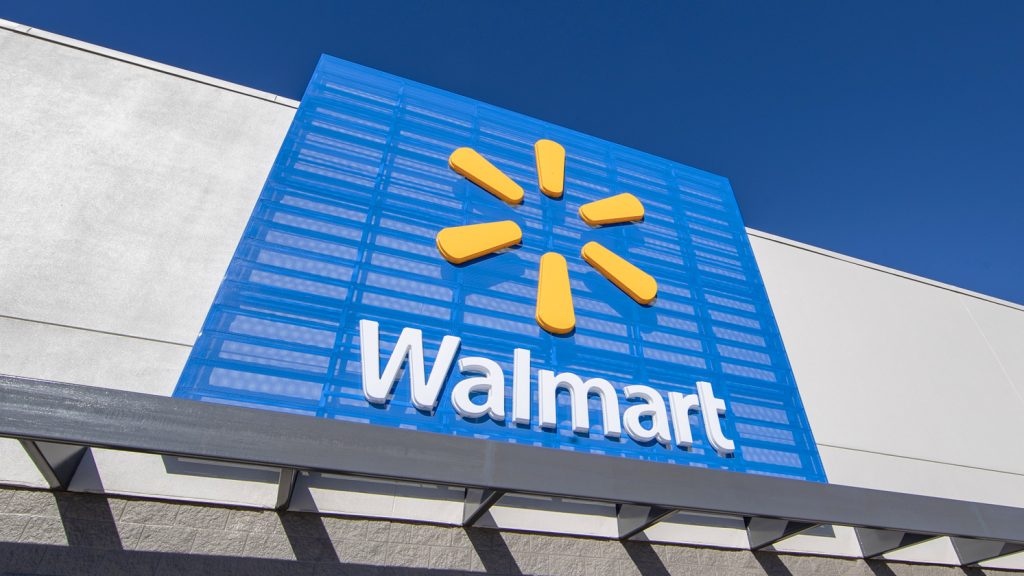
The WSJ just reported that even though companies are paying higher wages, spending more for materials and absorbing record freight costs, pushing up economic inflation gauges. Some are also reporting some of their best profitability in years. Executives are seizing a once-in-a-generation opportunity to raise prices to match and in some cases outpace their own higher expenses, after decades of grinding down costs and prices.
Industries from retail and manufacturing to biotech have seen their profits rise. Other industries, largely those still climbing out of pandemic lockdowns, such as travel, or those too weighted with inflationary costs, have raised prices but not experienced a profit boost.
Nearly two out of three of the biggest U.S. publicly traded companies have reported fatter profit margins so far this year than they did over the same stretch of 2019, before the Covid-19 outbreak, data from FactSet show.
- Large companies tend to use periods of rising inflation to boost their profit margins.
- Having fewer competitors in an industry makes it even easier for companies to raise prices.
- The current inflation rate is a “symptom” of corporate consolidation, Robert Reich says.
Conclusion
So highly compensated executives, business owners, and television news commentators can easily afford to counter inflation, But there are millions of middle-class Americans already under tight budgets who are feeling the pressure in their wallets by the rising prices on everything from beef to gas to fast food. In a financial forecast for next year, Aneta Markowska and Thomas Simons, economists with Jefferies, wrote: “Will inflation stifle growth, and prove self-defeating? In short, no. Low- and middle-income households, i.e. those most exposed to rising prices, have the capacity to absorb them, both due to ample savings and rapid wage growth.” The US unemployment rate is expected to decline to 3% by the end of 2022, creating the “tightest labor market since the 1950s.


